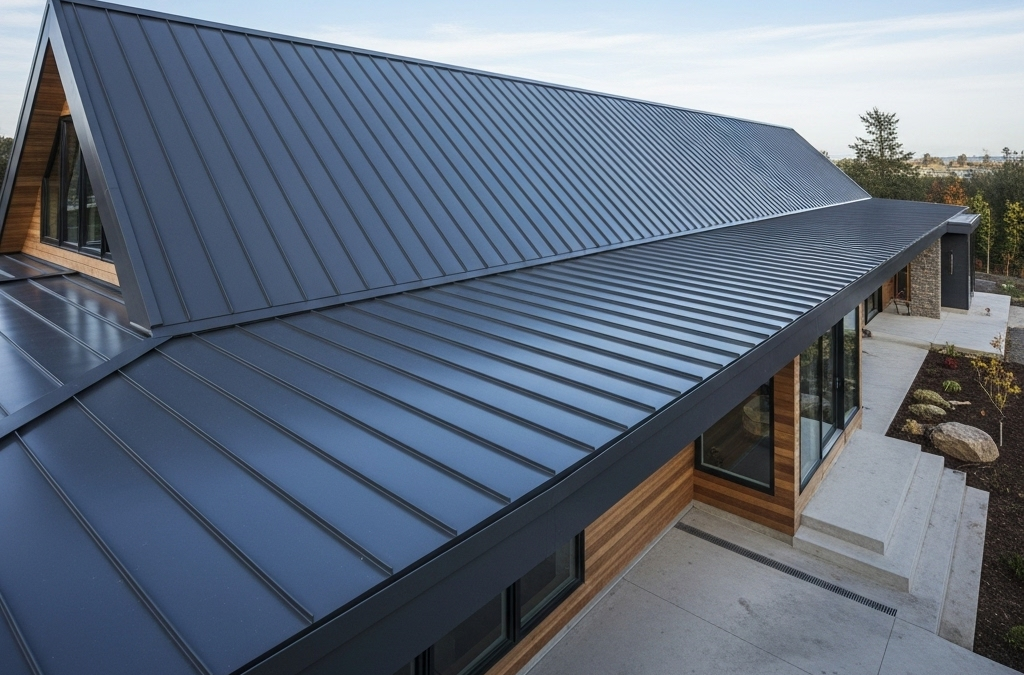The roof, long considered a mere protective cover, is undergoing a revolutionary transformation. We are moving far beyond traditional shingles and basic functionality. “Next-Gen Roofs” are emerging as sophisticated, integrated systems that seamlessly blend cutting-edge performance with breathtaking aesthetic appeal. These aren’t just about keeping the rain out; they’re about optimizing energy efficiency, enhancing architectural design, integrating smart technologies, and even contributing to environmental sustainability. From self-healing materials and integrated solar solutions to stunning visual textures and smart monitoring, the roofs of tomorrow are redefining what’s possible above our heads, transforming homes and buildings into smarter, more beautiful, and more resilient structures.
How do advanced materials and smart technologies fundamentally enhance a roof’s performance beyond traditional protection?
This question delves into the tangible benefits of innovation. We’re talking about materials like self-healing polymers that automatically seal minor punctures, advanced coatings that drastically reduce heat absorption (“cool roofs”), or integrated sensors that can detect leaks or structural stress before they become visible problems. It also encompasses improved insulation, fire resistance, and superior durability against extreme weather, ensuring a more resilient and long-lasting protective envelope.
In what ways do next-gen roofing solutions contribute to a building’s overall energy efficiency and environmental footprint?
Beyond just insulation, modern roofs are becoming active participants in sustainable living. This question explores features like seamless solar tiles that generate clean energy, vegetative “green roofs” that improve insulation, manage stormwater, and support biodiversity, or highly reflective surfaces that reduce cooling loads and combat the urban heat island effect. It addresses how these advancements translate into lower utility bills and a reduced environmental impact.
How are design and aesthetic possibilities being redefined by these new roofing technologies and materials?
No longer limited to conventional shapes and colors, next-gen roofs offer unprecedented creative freedom. This question examines how materials like stone-coated steel can mimic natural slate or wood with superior performance, how integrated solar panels disappear into the roofline, or how new forms (e.g., dramatic curves, bold asymmetries) are becoming architecturally feasible. It explores the interplay between material innovation and the ability to create visually stunning and unique roofscapes that truly enhance curb appeal.
What long-term implications do next-gen roofs have for maintenance, longevity, and future property value?
Investing in advanced roofing goes beyond immediate benefits. This question looks at the lifecycle advantages: Do these roofs require less frequent maintenance due to self-cleaning or durable surfaces? How significantly do their extended lifespans reduce the need for replacements? And importantly, how does the integration of smart features, energy efficiency, and modern aesthetics impact the resale value and desirability of a property in the evolving real estate market?
Conclusion
Next-gen roofs represent a pivotal shift in how we conceive of and interact with our buildings’ uppermost layer. They are no longer static, purely functional components but dynamic systems that actively contribute to a home’s performance, sustainability, and aesthetic appeal. By embracing innovations in materials, technology, and design, homeowners and builders can redefine their expectations, achieving unparalleled energy efficiency, enhanced resilience against environmental challenges, and striking architectural beauty. The evolution of roofing ensures that our homes are not just protected, but also optimized for the demands of the future, standing as testaments to the power of integrating tradition with groundbreaking technology.

